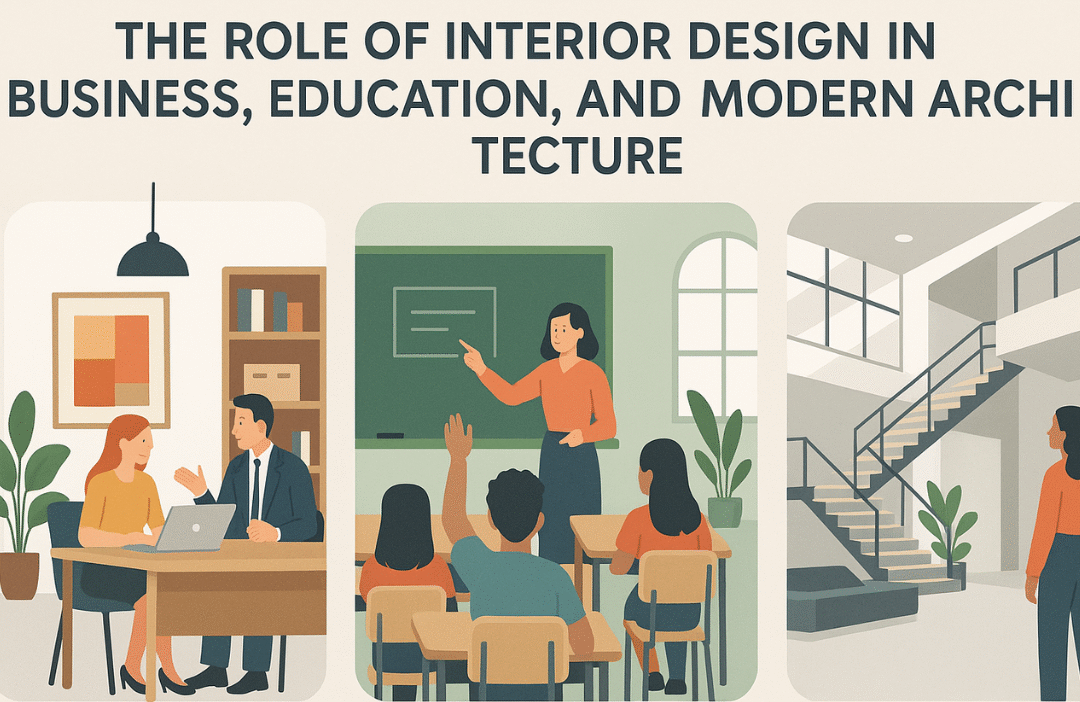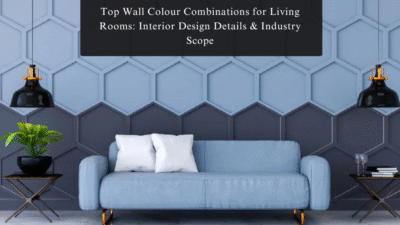Interior design today is more than just decorating a space—it’s about creating environments that improve function, comfort, and experience. Whether it’s a cozy home, a cutting-edge office, or a retail store, interior design plays a powerful role in shaping how people think, feel, and behave.
In this blog, we explore the different types of interior design, essential interior design basics, and how this creative discipline is becoming central to industries like business, management, art and architecture, and even education.
Understanding Interior Design Basics
Before diving into career paths or specializations, it’s important to grasp the interior design basics:
- Space Planning: Arranging furniture and decor to maximize flow and function.
- Color Theory: Using color to evoke emotion, balance, or contrast.
- Lighting Design: Blending natural and artificial light to affect mood and usability.
- Materials and Textures: Choosing finishes and fabrics that reflect identity and durability.
- Ergonomics: Ensuring comfort and health in work and living environments.
- Sustainability: Designing spaces that are eco-friendly and energy-efficient.
These principles form the foundation for every project and are used across all types of interior design.
Popular Types of Interior Design
Interior design is diverse, offering many directions to explore. Here are some of the most in-demand types of interior design:
1. Residential Design
Focused on homes, apartments, and private living spaces. Designers work closely with clients to reflect their lifestyle and preferences.
2. Commercial Design
Includes offices, retail shops, salons, and restaurants. The focus here is on branding, user flow, and business goals.
3. Hospitality Design
Used in hotels, resorts, and cafes. It blends luxury with functionality to create memorable guest experiences.
4. Healthcare Design
Designers work in hospitals and clinics to create safe, healing environments for patients and staff.
5. Institutional & Educational Design
Used in schools, libraries, and universities, with a focus on productivity, movement, and flexibility.
6. Exhibition & Set Design
Includes events, museums, and stage design, often influenced by art and architecture to create immersive experiences.
Interior Design Meets Art and Architecture
The relationship between art and architecture and interior design is deep and evolving. While architecture gives a space its structure, interior design brings it to life. And art—whether in the form of installations, murals, or sculptures—adds emotion and cultural value.
Designers who understand both fields can create interiors that are not only functional but also artistic and timeless. This integration is especially visible in museums, luxury homes, high-end retail, and modern workplaces.
Interior Design Across Industries
The scope of interior design has expanded far beyond homes. It is now a core part of strategy across many industries:
🔸 Business & Management
A well-designed office boosts productivity, collaboration, and employee well-being. Businesses are investing in design thinking to shape innovation labs, hybrid workspaces, and brand-driven interiors.
🔸 Healthcare
Thoughtfully designed interiors improve recovery rates, reduce stress, and enhance functionality for medical staff.
🔸 Education
Flexible classroom designs, learning pods, and libraries are built to support different teaching styles and student needs.
🔸 Retail & Branding
From window displays to lighting layout, interior design helps brands tell stories, create moods, and improve customer experiences.
🔸 Hospitality & Tourism
Design is central to guest satisfaction. Hotels and resorts use design to reflect culture, offer comfort, and stand out.
Emerging Trends in Interior Design
Here are some key trends shaping the future of interior spaces:
- Biophilic Design: Bringing nature indoors through greenery, daylight, and natural textures.
- Smart Interiors: Integrating IoT and automation in homes and workplaces.
- Minimalism with Warmth: Clean lines, soft palettes, and cozy materials.
- Cultural Fusion: Mixing global influences to reflect diversity and identity.
- Adaptive Reuse: Turning old buildings into functional modern spaces while preserving heritage.
Designers who stay updated with these trends are more likely to succeed in today’s fast-evolving industry.
Scope and Opportunities in Interior Design
Thanks to the wide demand across sectors, interior design offers great career potential. You can work as:
- Interior Designer
- Design Consultant
- Space Planner
- Exhibition or Set Designer
- Retail Visual Merchandiser
- Furniture and Lighting Designer
- Design Researcher or Strategist
With the rise of virtual reality and AI in the design process, there’s also a growing need for designers skilled in digital tools, 3D modeling, and user-centric design.
Tips for Students and Beginners
If you’re planning to study or pursue a career in interior design, here are some suggestions:
- Start with learning interior design basics through workshops or online courses.
- Study art and architecture to develop a sense of visual balance and history.
- Create a portfolio with real or conceptual projects.
- Follow design magazines, blogs, and exhibitions.
- Intern with professionals to gain hands-on experience.
Choosing the right design school that offers strong mentorship and cross-disciplinary exposure is also key to building your foundation.
Final Thought: Design That Shapes Life
Interior design isn’t just about decorating rooms—it’s about improving the way people experience space. As industries evolve and expectations change, designers are now problem-solvers, storytellers, and strategists.
By understanding the types of interior design, mastering interior design basics, and exploring connections with art and architecture, you can play a meaningful role in shaping spaces that inspire, comfort, and empower.



